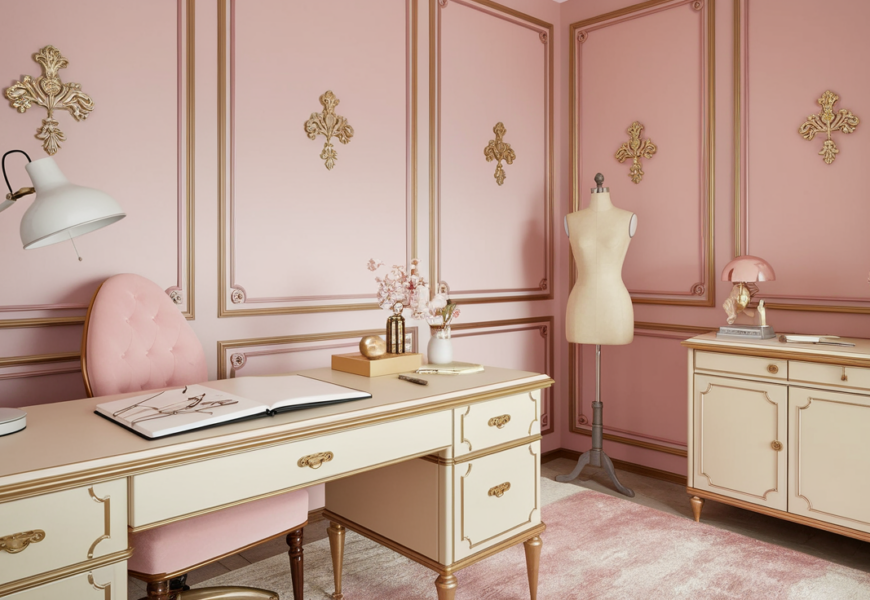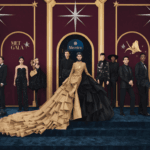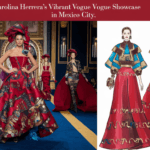I recently discovered a fantastic tutorial that can transform anyone into a fashion stylist in just five steps. Erica Matthews thoughtfully shares her expertise in this series, guiding aspiring stylists from choosing their specialization to building a network within the industry. Her emphasis on understanding the type of stylist one wants to be sets a strong foundation for building a successful career. By investing time in her series, viewers are not only treated to valuable professional insights but also gain access to a community of like-minded individuals eager to learn and grow.
Erica’s approach to starting a career in fashion styling is refreshingly straightforward, with clear steps on portfolio creation and self-promotion. Utilizing social media as a tool for personal branding, she encourages showcasing your work to reach a broader audience. Her emphasis on active participation, like engaging with her additional resources such as workshops and mentoring programs, demonstrates the importance of continuous learning and community support. Every piece of advice she offers comes from a place of genuine passion for helping others succeed, making her tutorial an invaluable resource for anyone serious about stepping into the world of fashion styling.
Understanding the Role of a Fashion Stylist
Defining a Fashion Stylist
As a fashion stylist, I have the unique ability to transform clothing into expressions of art and personality. At its core, fashion styling involves curating and assembling outfits that visually communicate a story or message. It’s more than just pairing garments together; it’s about understanding the nuances of fashion, color theory, trends, and the personalities of the individuals I dress. Whether working on a photoshoot, a movie set, or with a private client, my role is to use clothing as a tool to enhance, disguise, or transform an image according to the purpose of the project.
Different Types of Fashion Stylists
The world of fashion styling is wonderfully diverse, with several specialties to consider. Editorial stylists, like myself, often focus on fashion magazines and publications, creating visually stunning images that capture the imagination. Celebrity stylists work directly with famous personalities, crafting their looks for public appearances. Personal stylists, on the other hand, help everyday individuals develop their personal style. Commercial stylists work on advertisements and fashion shoots for brands, translating a brand’s identity into visual appeal. Each type of styling requires a different skill set and caters to varying audiences, providing many exciting avenues to explore in a stylist career.
Skills Required for Success
To succeed as a fashion stylist, there are several key skills I need to hone continuously. Creativity and a good eye for aesthetics are paramount, allowing me to envision outfits and understand how different colors and textures work together. Strong communication skills are also crucial, as I often collaborate with photographers, designers, and clients. Organization and time management are essential to handle the fast-paced nature of the job. Additionally, an understanding of fashion trends and historical knowledge helps inform my styling choices. Lastly, networking skills are vital as they open doors to collaborations and opportunities within the fashion industry.
Step 1: Identify Your Styling Niche
Exploring Different Career Paths in Styling
Deciding what kind of stylist I want to be is the first step on this exciting journey. With so many paths available, exploring each one is crucial for satisfaction and success. Whether my interest lies in editorial, commercial, celebrity, or personal styling, understanding each of these niches helps shape my career path. Editorial work satisfies my creative side with its artistic freedom, while personal styling provides the rewarding feeling of helping individuals enhance their confidence through clothing.
Researching Opportunities in Each Area
Once I choose an area of interest, thorough research helps uncover the best opportunities. Understanding the landscape of the niche, identifying major players, and recognizing the trends are essential steps. For instance, if I am drawn to editorial styling, I might follow major fashion publications and note their stylist preferences. For celebrity styling, knowing which events and occasions are most significant helps align my aspirations. This research helps in finding internships and mentors who can guide me in the right direction.
Aligning Your Interests with Demand
Aligning my personal interests with market demand ensures a sustainable and rewarding career. By reviewing job postings, industry reports, and trend analyses, I can find areas within fashion styling where there is room for growth and innovation. For instance, the rise of digital styling and e-commerce has opened new doors in virtual fashion styling. By aligning my passion with these emerging trends, I not only pursue what I love but also ensure that my skills are in demand.
Step 2: Building a Strong Portfolio
Understanding the Importance of a Portfolio
A fashion stylist’s portfolio is my most valuable tool. It is a showcase of my skills, creativity, and experience, providing potential clients and employers with a glimpse of what I can do. A strong portfolio highlights the versatility of my work, demonstrating my ability to adapt to different projects and requirements. It is my visual resume, narrating my artistic journey and giving a sense of my signature style.
Types of Shoots: Test, Commission, and Submission
Building a comprehensive portfolio involves participating in different types of shoots. Test shoots are invaluable for experimenting with new ideas and honing my skills without the pressure of a commercial project. Commission shoots, often undertaken for specific clients, allow me to showcase my ability to meet a client’s needs while maintaining creative integrity. Submission shoots are collaborations with the intention of getting published in fashion magazines, offering exposure and credibility. Each type of shoot adds variety and depth to my portfolio.
Collaborating with Photographers and Models
Collaboration is at the heart of successful fashion styling. Working alongside photographers and models allows me to bring my creative visions to life. Building a network of reliable professionals helps ensure the smooth execution of photo shoots. The synergy developed with my creative team elevates the quality of the work, as everyone contributes their expertise. Regular collaborations also lead to new ideas and opportunities, as my team and I grow and evolve together.
Developing Relationships with PR and Brands
Building strong relationships with PR professionals and fashion brands is essential for accessing the latest trends and clothing items for styling projects. By developing a mutually beneficial relationship with PR agencies and brands, I can secure clothing samples for shoots, keeping my work fresh and current. Networking with industry insiders increases my visibility and credibility, leading to more opportunities and collaborations.
Step 3: Promoting Yourself Professionally
Utilizing Social Media Platforms Effectively
In today’s digital age, social media is a powerful tool for self-promotion. Platforms like Instagram allow me to showcase my work to a global audience, attracting potential clients and collaborators. By maintaining an active online presence, I can display my latest projects, share behind-the-scenes glimpses, and build a personal connection with my audience. Strategic use of hashtags and collaborations with influencers can further increase my reach and impact.
Creating a Personal Website or Blog
A personal website or blog offers a professional platform to showcase my portfolio and express my styling philosophy. It serves as a centralized hub where potential clients can explore my work and learn more about my services. In addition to static images, a blog lets me share insights into my creative process, fashion tips, and industry trends. Regular updates to my website reflect my ongoing growth as a stylist and ensure my online presence remains dynamic and engaging.
Showcasing Work Over Personal Branding Elements
While personal branding elements like logos and taglines are important, focusing on showcasing my actual work is key to attracting clients and collaborators. Displaying quality content that reflects my styling capabilities and distinct flair will speak louder than any branding gimmicks. By highlighting successful projects and client testimonials, I establish credibility and inspire confidence in my skills.
Networking and Making Industry Connections
Building a professional network is vital in the fashion industry. Attending events, participating in workshops, and joining online forums allow me to connect with like-minded individuals and industry veterans. Building meaningful relationships with peers and mentors opens doors to new opportunities and enhances my understanding of the industry. By consistently putting myself out there and expressing genuine interest in others’ work, I become part of a supportive community that contributes to my professional growth.
Engaging with Erica Matthews’ Community
Importance of Community Participation
Being an active participant in Erica Matthews’ community provides invaluable support and knowledge-sharing opportunities. Engaging with others on forums and social media platforms fosters a sense of camaraderie, as we share tips, experiences, and encouragement. This collective wisdom is powerful, offering new perspectives and insights that enrich my styling journey.
Liking, Subscribing, and Sharing Content
Actively supporting Erica’s content by liking, subscribing, and sharing not only benefits me by expanding my knowledge but also helps others discover valuable resources. Being part of a community means mutual upliftment and support, and contributing positively to the shared content strengthens the bonds within this group.
Supporting Erica’s Work and Others
Supporting Erica Matthews and other industry leaders through social media engagement, attending events, and purchasing products or workshops is a two-way street. It’s about recognizing the value they provide and reciprocating through active participation. This support helps sustain the ecosystem of learning and collaboration, paving the way for continuous professional growth.
Expanding Skills Through Additional Resources
Exploring Workshops and Mentoring Programs
Continuous learning is crucial for staying relevant in the rapidly evolving fashion industry. Participating in workshops and mentoring programs offered by seasoned stylists like Erica Matthews provides deeper insights into the trade. These experiences are opportunities to refine my skills, learn new techniques, and gain valuable feedback from experts.
Using Erica’s Other Video Tutorials
Erica’s video tutorials are a treasure trove of styling wisdom. They cover a wide range of topics, from understanding fashion history to practical styling tips, offering a comprehensive learning resource. By engaging with her tutorials, I stay updated with industry trends and techniques that can be applied in my work.
Continuing Education and Skill Development
Apart from the resources offered by Erica, continuous self-education through online courses, fashion seminars, and trend reports keeps my skills sharp. Staying updated on fashion technology and innovative styling tools ensures I remain competitive and capable of meeting the changing demands of clients and the industry.
Tips for Newcomers in the Fashion Industry
Overcoming Challenges and Industry Hurdles
Entering the fashion industry can be challenging, with its intense competition and fast-paced environment. Embracing adaptability, resilience, and a positive attitude helps overcome obstacles. Seeking mentorship, asking for feedback, and learning from mistakes are crucial to developing the skills and tenacity needed to succeed.
Gaining Hands-On Experience
Hands-on experience is invaluable for aspiring stylists. Interning with established stylists, assisting on shoots, and working on small projects offer practical insights into the industry. These experiences provide opportunities to apply learned skills, understand the workflow, and build professional connections that are essential for career advancement.
Staying Updated with Fashion Trends
Keeping abreast of fashion trends is crucial for relevance and innovation in styling. Regularly reviewing fashion publications, attending industry events, and following influencers and designers on social media offer insights into current trends. Recognizing the balance between trends and timeless style ensures my work resonates with both contemporary and classical tastes.
Developing an Authentic Personal Style
Finding Inspiration from Iconic Stylists
Drawing inspiration from iconic stylists offers a broader perspective on different styling techniques and philosophies. Studying their work helps refine my taste and expand my creativity. By understanding the principles behind their success, I develop my own unique style that reflects my personal vision and sensibilities.
Balancing Trends with Timelessness
Incorporating current trends while ensuring timeless appeal is a delicate balance that enhances my styling work. Understanding the core elements of classic style and blending them with modern influences keeps my creations fresh and relevant. This balance also ensures longevity in the designs I create, providing enduring value to my clients.
Expressing Individuality in Styling
Expressing my individuality through styling is about showcasing my personal interpretation of fashion. Embracing what makes me unique and confident in my choices allows my work to stand out. It helps build a distinctive brand identity that attracts clients who resonate with my aesthetic and vision.
Leveraging Technology for Fashion Styling
Using Apps and Tools for Styling Efficiency
Technology offers numerous tools to enhance my efficiency and creativity as a stylist. Apps that aid in outfit coordination, virtual fitting, and trend analysis streamline the styling process. Leveraging these technologies enables me to deliver results more quickly and effectively, enhancing client satisfaction.
Virtual Styling and E-Commerce Opportunities
The rise of e-commerce and virtual styling services presents new opportunities for reaching a global client base. Offering virtual consultations and lookbooks expands my market and provides convenient options for clients. Adapting to this digital landscape ensures I remain competitive and effectively serve clients in various locations.
Staying Ahead in a Digital World
Remaining at the forefront of technology and digital advancements ensures my continued relevance in the fashion industry. Engaging with tech-focused forums, participating in webinars, and experimenting with new digital platforms keeps my skills sharp and adapted to future trends.
Conclusion
Summing Up Key Takeaways
Embarking on a career in fashion styling involves understanding the different roles a stylist can play, identifying a niche, building a compelling portfolio, promoting oneself effectively, and engaging with a supportive community. Continuous skill enhancement and adapting to industry changes are key to success.
Encouragement for Aspiring Stylists
For anyone considering a career in fashion styling, I encourage embracing both the creative joy and the challenges it brings. Each step is a learning opportunity that shapes your personal and professional growth. The journey is as rewarding as the destination if approached with passion and dedication.
Looking Forward to a Career in Fashion Styling
The world of fashion styling is as dynamic as it is rewarding, with endless possibilities awaiting those who venture into it. By continuously learning, growing, and adapting, I look forward to a fulfilling career where I can express my creativity while making a positive impact on people’s lives through fashion.



